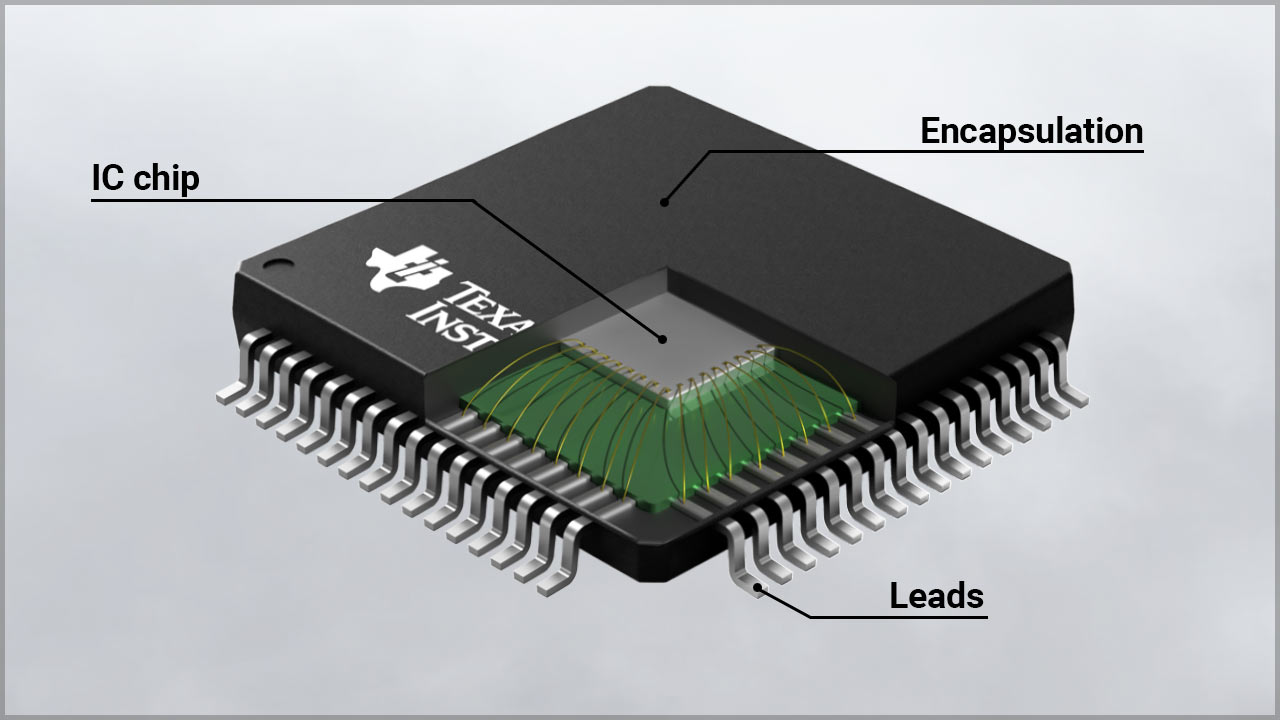Introduction:
Chip packaging is a critical step in the semiconductor manufacturing process, serving as the protective enclosure for semiconductor chips while facilitating their connection to circuit boards.
However, the significance of chip packaging extends beyond mere physical protection. It plays a pivotal role in determining the performance and reliability of semiconductor devices.
In this comprehensive blog post, we will delve into the primary objectives of chip packaging and explore how it impacts the performance and reliability of semiconductor devices through real-world examples.
Follow us on LinkedIn for everything around Semiconductors & AI
4 Primary Objectives of Chip Packaging:
1. Protection:
The foremost objective of chip packaging is to shield semiconductor chips from environmental factors such as moisture, dust, temperature fluctuations, and mechanical stress. By encapsulating chips in protective materials, packaging prevents physical damage and ensures long-term durability.
- Encapsulation: The package surrounds the chip, forming a barrier against dust, moisture, and other environmental contaminants. This prevents short circuits and corrosion that could destroy the chip’s intricate circuitry.
- Shock and Vibration Dampening: The packaging material absorbs shocks and vibrations from the environment. This helps to protect the fragile chip from physical damage during transportation and operation.
Material: A plastic quad flat package (QFP) for a memory chip uses a mold compound to encapsulate the chip, shielding it from dust and moisture.
Shock Absorption: A ceramic leadless chip carrier (LCC) for a power management chip has a thicker and sturdier package compared to a plastic one, offering better shock and vibration resistance.
2. Electrical Connection:
Its facilitates the electrical connection between semiconductor chips and circuit boards,such as enabling seamless communication and data transfer. This includes providing pathways for power distribution, signal routing, and thermal management.
- Interconnection with PCB: The package provides electrical connections, like pins or tiny solder balls, that allow the chip to connect to the PCB’s traces. These connections enable the chip to send and receive signals to and from other components in the system.
- Power Delivery and Grounding: The package also facilitates power delivery and grounding for the chip. Power and ground pins ensure the chip receives the necessary voltage to operate and provide a stable electrical reference point.
Pins: A dual in-line package (DIP) for a simple logic chip has rows of metal pins on either side that connect to the PCB through holes.
Solder Balls: A ball grid array (BGA) package for a high-performance processor has hundreds of tiny solder balls on the underside that connect directly to the PCB’s solder pads.
3. Mechanical Support:
Packaging also serves as a mechanical support structure for semiconductor chips, preventing them from bending or flexing during handling, assembly, and operation. Proper mechanical support is crucial for maintaining the integrity of delicate chip components.
4. Heat Dissipation:
Efficient heat dissipation is essential for preventing semiconductor chips from overheating, which can degrade performance and reliability. Chip packaging incorporates thermal management features such as heat sinks, thermal pads, and conductive materials to dissipate heat generated during operation.
Since chips generate heat during operation, the packaging plays a role in heat dissipation. The package material itself conducts heat away from the chip. Some packages incorporate heat sinks or other thermal management solutions to further regulate temperature and prevent overheating.
Conductive Material: A lead frame package for a voltage regulator chip uses a metal lead frame that conducts heat away from the chip towards the PCB.
Heat Sink: A high-end graphics card chip might be packaged in a solution with a dedicated heat sink and thermal paste to efficiently dissipate heat generated by the powerful GPU.
Read More:AI GPU Market 2024: NVIDIA dominates with $40B, AMD rises to $3.5B, Intel lags at $500M – techovedas
Impact on Performance and Reliability:
Example 1: Mobile Phones:
In mobile phones, chip packaging plays a crucial role in ensuring optimal performance and reliability. The compact size and slim profile of mobile devices necessitate advanced packaging techniques such as flip-chip BGA (Ball Grid Array) to achieve high-density integration while maintaining thermal efficiency.
By effectively dissipating heat generated by power-hungry components like processors and graphics chips, chip packaging helps prevent thermal throttling and ensures consistent performance even under heavy usage.
Example 2: Automotive Electronics:
Automotive electronics demand robust chip packaging solutions capable of withstanding harsh environmental conditions such as extreme temperatures, humidity, and vibration. In automotive applications, packages like QFN (Quad Flat No-Lead) and LGA (Land Grid Array) provide reliable electrical connections and mechanical stability. This ensures the durability and longevity of critical components like engine control units (ECUs) and sensors.
By safeguarding semiconductor chips from environmental stressors, chip packaging contributes to the safety and reliability of automotive systems.
Read More: 4 Talks on Future of Semiconductor Industry by Intel Nvidia AMD and TSMC CEO – techovedas
Conclusion:
By employing advanced packaging techniques tailored to specific application requirements, semiconductor manufacturers can enhance the performance, reliability, and durability of electronic devices across various industries.



